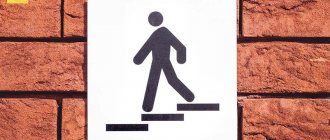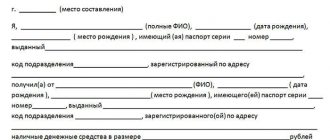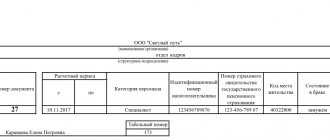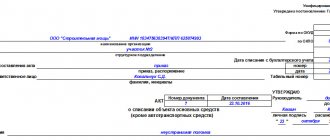What are protective equipment?
This is property that workers use to reduce the negative impact of harmful substances and protect the body from pollution.
Classified into:
- Collective . Used to ensure the safety of the entire team.
- Individual . They are used to preserve the health of only one person.
Protection from the influence of external factors that negatively affect working personnel must be provided by the facility manager.
Categories of protective equipment
Means for maintaining health are classified and divided into subgroups:
- First . From general pollution, mechanical impacts, from fumes of non-toxic compounds, from slipping. This includes protection from abrasion, vibration, cuts and punctures, noise, and from falling from a height.
- Second . For protection against chemical products (vapors of aerosols, varnishes and paints, petroleum products, fats, oils of various compositions).
- Third . To protect personnel from the effects of biological factors (insects and various microorganisms).
- Fourth . To preserve the health of personnel from radiation and ionizing radiation.
- Fifth . To ensure protection of the body from temperature changes, thermal study, as well as contact with heated and cold surfaces.
- Sixth . From exposure to electric current, shocks formed by an electric arc, static electricity, electromagnetic fields and radiation.
- Seventh . This is protective clothing for signal recognition when the worker is at a distance in the field of view.
- Eighth . Complex protective equipment. For example, a gas mask that simultaneously protects the organs of vision and smell from dust, gas contamination, as well as mechanical damage to the skin.
- Ninth . Dermatological products: they provide protection against low temperatures, ultraviolet exposure, microorganisms, and insects. Varieties: hydrophobic and hydrophilic action.
PPE is issued depending on production conditions.
Collective protective equipment
Means for protecting the collective are divided into the following categories:
- To bring the air environment to standard indicators . This is a device for ventilation units, pressure normalization and conditioning, signaling the presence of harmful substances and hazards found in the air of work areas.
- To normalize the lighting level (installation of light filters, light openings, lighting devices).
- From ionizing radiation (equipment for air purification, trapping harmful radiation, including the use of protective coatings).
- From infrared radiation (thermal insulation equipment or automatic alarm devices).
- From ultraviolet radiation (ventilation units and protective devices).
- From noise (soundproofing and sound-absorbing equipment).
- From electric shock (grounding devices, lightning rods, grounding).
- From mechanical influences (protective casings, blocking).
Means of collective protection of personnel are provided for by regulatory documents and local acts.
Individual protection means
Personnel are provided with the issuance of property to protect them from the negative effects of harmful substances on the body.
List of issued property:
- Workwear (winter and summer suits, scarves, hats, aprons and much more).
- Working shoes (shoes, boots, ankle boots, sandals).*
- Special means that provide respiratory protection (respirators of various types, gas masks).
- Hearing protection equipment (headphones, earplugs).
* Slippers are classified as technical clothing, as they do not provide ankle protection. Footwear used in production must be closed type.
Legal basis for the use of PPE
The legal basis for the use of special protective equipment at an enterprise, including requirements for the acquisition, storage, issuance of PPE to employees, their use and care, is established by Intersectoral Rules, enshrined in Order of the Ministry of Health and Social Development of Russia dated 01.06.2009 No. 290n (hereinafter referred to as Intersectoral Rules, Order No. 290n ).
This regulatory act abolished the previously existing rules approved by Decree of the Ministry of Labor of Russia dated December 18, 1998 No. 51. Intersectoral rules apply to all organizations and citizens. In accordance with clause 3 of the rules, personal protective equipment is used for the following purposes:
- to reduce the harmful effects of harmful factors;
- preventing the influence of hazardous production factors on the employee;
- in order to protect the employee from contamination during the performance of work duties.
Special protective equipment is purchased at the expense of the employer and issued to employees in accordance with physiological characteristics (height, suitable size) and taking into account hazardous production factors in a particular organization.
PPE is divided into classes depending on their purpose. Thus, PPE is used to protect:
- eyes and faces;
- respiratory organs (for example, respirators);
- skin and its restoration after external influence;
- from falling when working at height;
- heads (helmets or caps);
- hearing organs;
- arms and legs.
The most common means is special protective clothing, which, depending on working conditions, can be divided into summer and insulated winter clothing.
You can find more complete information on the topic in ConsultantPlus. Full and free access to the system for 2 days.
Procedure and standards for issuing PPE
All personal protective equipment issued by the enterprise must correspond to the physiological parameters of a person. Control over the collateral must be carried out within certain periods, and the issuance must be documented.
Several rules of procedure and norms of issuance:
- When combining professions, workers must be provided with additional PPE in accordance with the conditions regulated for these working conditions.
- Duty PPE is needed to carry out various tasks and work related to eliminating the consequences of accidents.
- PPE can be assigned to individuals based on hygiene requirements.
- If PPE is intended for a particular season, then at the end of it it must be put in the storeroom.
- The manager must provide instructions on the rules for using personal protective equipment, such as a gas mask, respirator or safety belts.
The standards for issuing PPE are specified in regulations and in special assessment cards for working conditions.
What is a logbook for recording and maintaining protective equipment and how to fill it out correctly?
The logbook for recording and maintaining protective equipment is a document of a certain form, which is Appendix No. 1 to the Instructions for the use and testing of protective equipment used in enterprises associated with electrical installations, instruments and other devices, approved by Order No. 261 of June 30, issued by the Ministry of Energy. 2003, which involves entering into the document data on protective and isolating equipment for certain categories of workers. So, what is a logbook for recording and maintaining protective equipment and how to fill it out?
Who needs a logbook for recording and maintaining protective equipment and why?
The log is necessary at enterprises where the activities of workers are associated with a variety of hazardous factors.
The journal is an official document , it must be laced, each page is numbered in order, the last page must indicate the total number of sheets, and the journal is certified by the seal of the enterprise and the signature of the person responsible for its maintenance.
What is a register of industrial accidents and how to keep it correctly - find out by following the link.
What are the means of protection?
How to fill out the document?
The following information is indicated on the cover of the document or title page:
- name of the enterprise;
- area, service, specific area;
- start and end dates of maintenance.
Journal of business transactions: a sample of filling out with postings, as well as a guide to maintaining it at the enterprise, can be found in our new publication at the link.
The first entry in the Logbook for recording and maintaining protective equipment is made on the day the use of various special protective equipment begins.
Such means include:
- spacesuits;
- respirators;
- helmets;
- special clothing;
- isolation suits;
- gas masks;
- various devices;
- others specified in GOST 12.4.011-89.
How to correctly fill out the registration log for introductory briefing on labor protection? A sample and step-by-step instructions are in the article at the link.
When issuing any of the equipment, an individual card is always created in which data about the recipient of the personal protective equipment is entered - full name, height and size, position, and other data - serial number, quantity and description of the issued PPE.
The data in the Journal and the card must be completely identical; discrepancies are not allowed.
Logbook for recording and maintenance of protective equipment: details and sample filling
The logbook for recording and maintaining protective equipment in electrical installations consists of pages that indicate the following sections that are required to be filled out:
- Number assigned to PPE (this is handled by the accounting department).
- Name.
- The exact date of the tests performed, the next inspection date.
- The exact time the inspection was performed.
- Full details of the person responsible.
- The exact date of issue of PPE for its intended use.
- Location or storage if personal protective equipment is not used.
What is a fire extinguisher logbook and how to properly maintain it at an enterprise, you can find out in this article.
When the pages in the Journal run out, the document is handed over to the archives and stored there.
Sample title page of the logbook and contents of protective equipment.
Where can I download a free logbook for recording and maintaining protective equipment in electrical installations?
Journal of registration and maintenance of protective equipment - a sample filling is located at this link . And here you can download the document form for free.
An example of a logbook for recording and maintaining protective equipment in electrical installations:
Magazine blank.
What is a fire safety briefing log and how to fill it out correctly - read here.
You can find out in what order the issuance, accounting and use of personal protective equipment is carried out in the following video:
Accounting for the issuance of personal protective equipment
Records of the issuance of PPE are kept in a special journal. The organization of work at the enterprise takes place according to the following scheme:
- The administrative document appoints a responsible person.
- Issue sheets are created, which indicate which personal protective equipment was issued and for what period.
Issue record sheet
To control the issuance of personal protective equipment, a statement of the established form is maintained. The document is filled out in 2 copies, one is given to the storekeeper, and the second is sent to the accounting department. After the PPE is issued, the employee signs.
How to issue a personal PPE card
Information about the employee, protective equipment that needs to be issued, body measurements, headgear, safety shoes are displayed in the document for issuing PPE. Using the card, it is easy to monitor the provision and compliance with wear deadlines.
Front side of the card
The following information is entered into the form:
- Last name and initials. Indicated in full.
- Employee personnel number.
- Number of the area where the personnel work.
- Position held.
- Date of entry into the enterprise.
- The number when the employee changed his profession or transferred to another job.
- Information is recorded: gender, height, sizes of clothes, shoes, hats, personal protective equipment, gloves.
The table indicates the name of the PPE, the item number from the standards, how it is measured and the quantity for 12 months.









